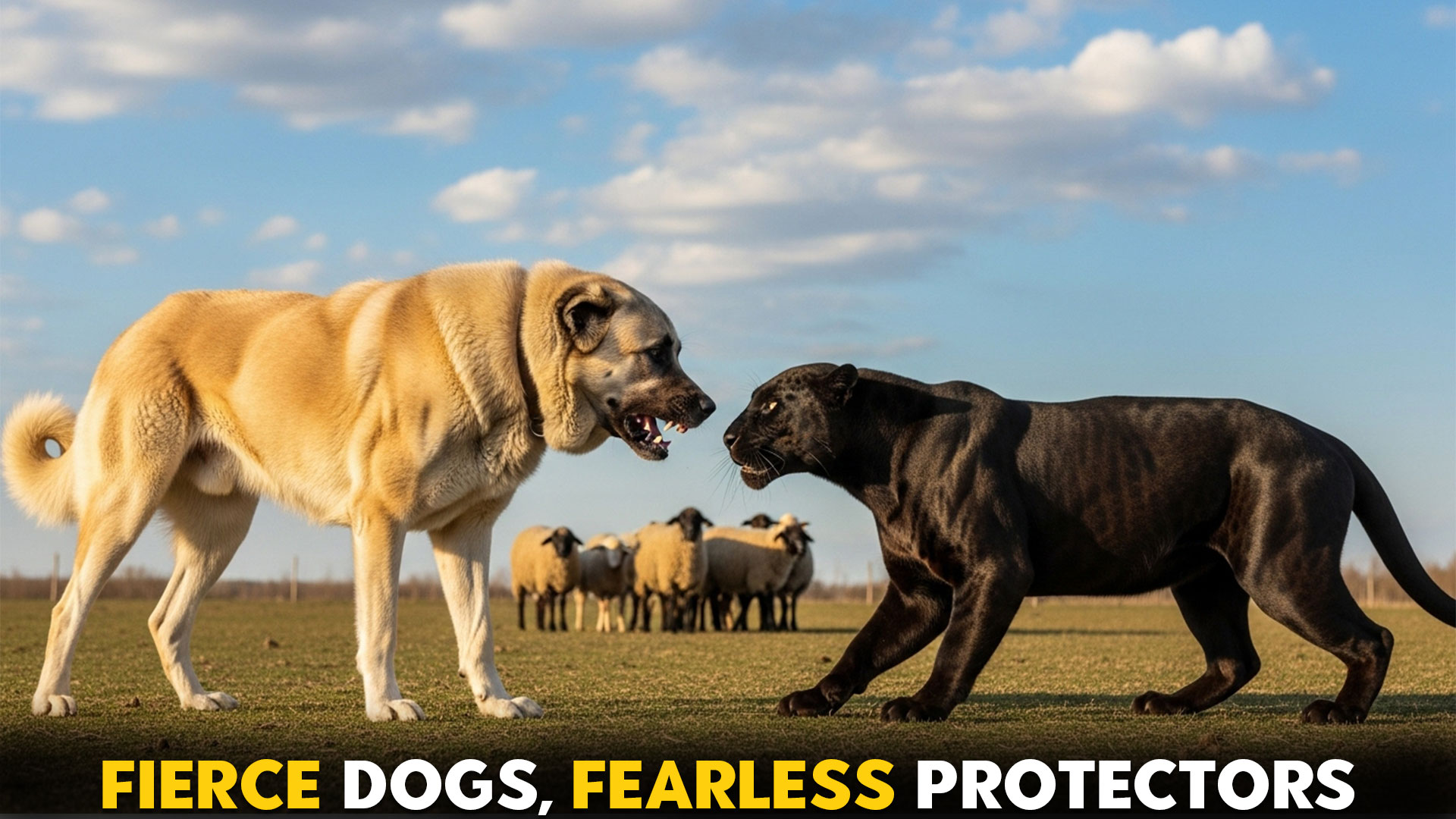In many rural landscapes, a black panther’s presence isn’t just folklore — it’s a dangerous reality for livestock, for people, and for conservation efforts. These predators are stealthy, strong, and often nocturnal, making ordinary deterrents ineffective. Only animals bred for courage, loyalty, and physical power can stand in their way.
Did you know recent research shows that livestock guardian dogs can reduce predation by up to 80% when properly trained and used?
That’s a dramatic statistic — and it speaks volumes about why guardian dog breeds matter deeply in regions where black panthers or similar apex predators pose a real threat.
This article cuts through hype to deliver expert insights. You’ll discover seven breeds renowned for their capability to protect, not just patrol. Each breed on this list has proven defensive instincts, learned over generations, to confront large predators under the worst conditions.
Whether you’re a farmer, wildlife protector, or dog enthusiast, you’ll gain clear guidance. By the time you finish, you’ll know which dog can be your best defence against a black panther — not in theory, but in real life.
Guard Dog Breeds For Protection Against Black Panthers
1. Dogo Argentino
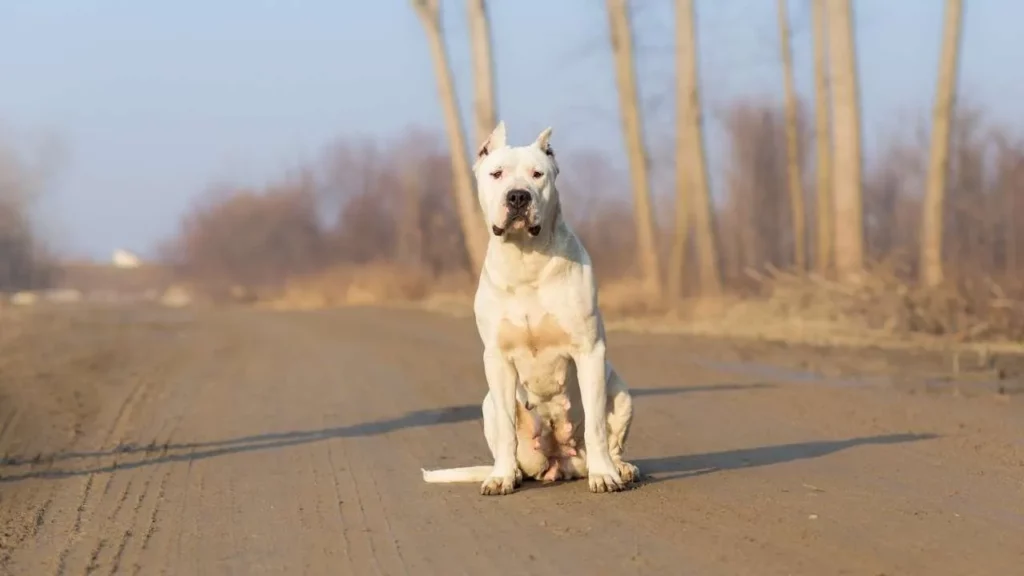
The Dogo Argentino is not a legend of defense born in the mountains, but a hunter’s creation from Argentina, designed with a singular purpose—confronting the fiercest quarry.
Leopards, pumas, wild boars—its history is written in pursuits where hesitation meant failure. Its courage is not noise; it is purpose in motion.
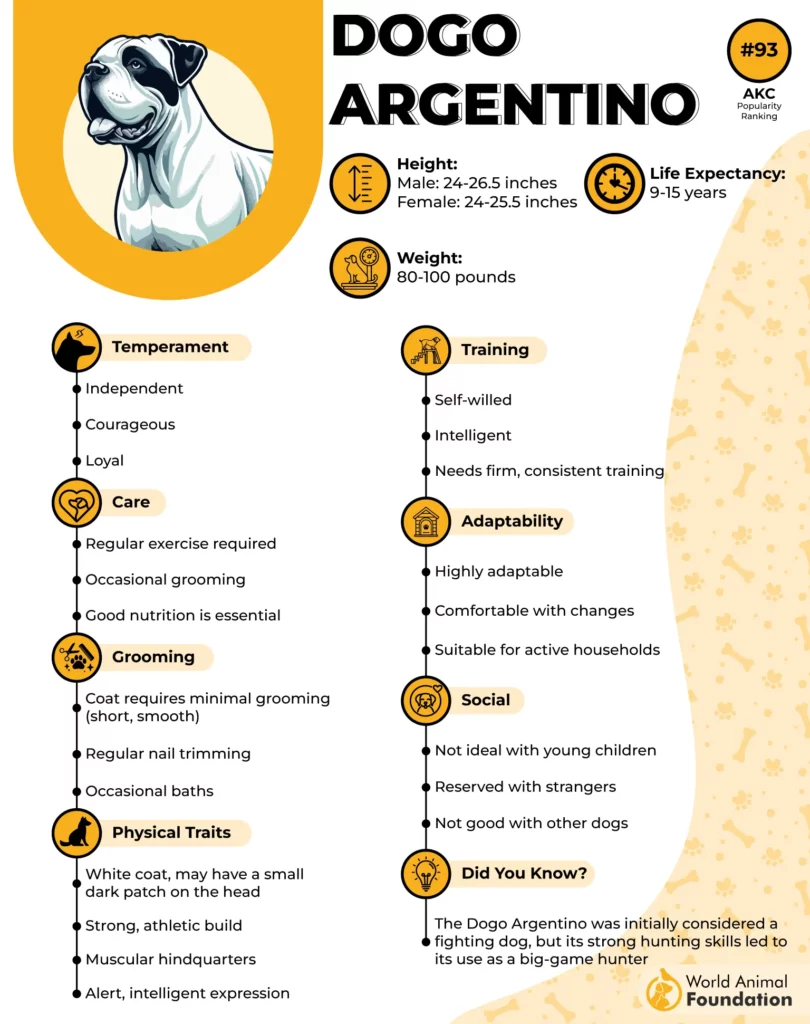
On the open plain, the Dogo’s stride is driven and muscular, built for stamina under the relentless sun. But when danger closes in, it reveals its heritage—explosive speed, jaws built for grip, and a heart that doesn’t back away.
Defense for the Dogo is never random. First, it sizes the terrain, anchoring itself where escape routes narrow. Then comes the silent lock of eyes, the stillness before the storm. When the charge begins, there’s no bluff—it’s all in, and few predators withstand that kind of certainty.
WebMD explains that discipline gives the Dogo its edge. Routine handling, structured exercise, and a clear leadership channel its immense drive into calm readiness. Without structure, the same fire that makes it fearless can burn uncontrollably.
Boundaries matter less to the Dogo than the living bond with its people. Where the handler stands, it stands. Where livestock grazes, it plants its body as a shield. Its loyalty is both its compass and its weapon.
When the confrontation escalates, the Dogo follows a primal sequence: steady gaze, silent stalk, a sudden forward leap, and a grip that holds until the danger breaks. There are no wasted moves—only decisive ones.
Against stealth predators like black panthers, the Dogo Argentino’s strength lies in its fearless pursuit. While Kangals and Anatolians often deter by presence and bark, the Dogo commits fully to driving the predator away. In dense terrain where ambush is common, this relentless style makes it a powerful ally.
Owner Insights: Post-Fight Care
After confrontation, the Dogo must be carefully checked for bite wounds or deep cuts, especially around the chest and neck. Immediate wound cleaning and vet attention are vital—its bravery can mask pain.
Provide calm reassurance, rehydrate with fresh water, and allow quiet rest. Regular confidence-building exercises post-incident help the dog reset, ensuring its mind stays sharp for future encounters.
2. Anatolian Shepherd
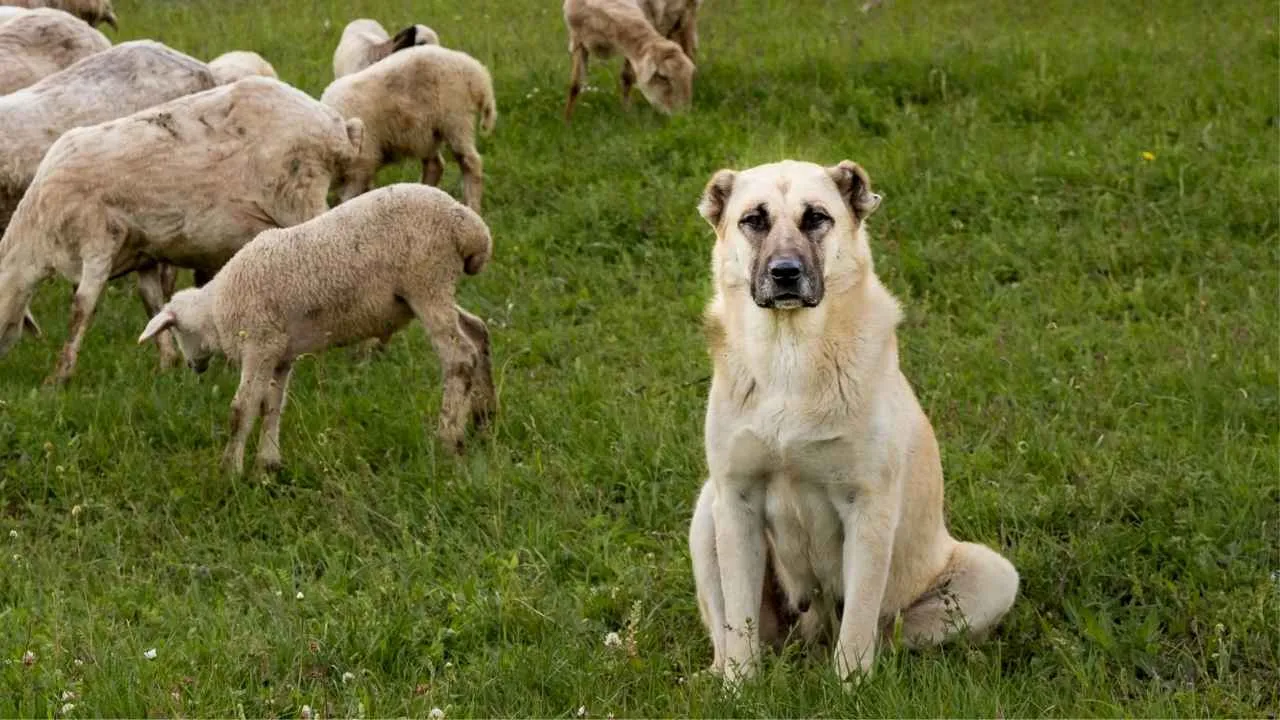
The Anatolian Shepherd is often mistaken for the Kangal’s twin, but its character is uniquely its own—rugged, patient, and quietly commanding according to AKC. Farmers call it the “thinking guardian,” and for good reason.
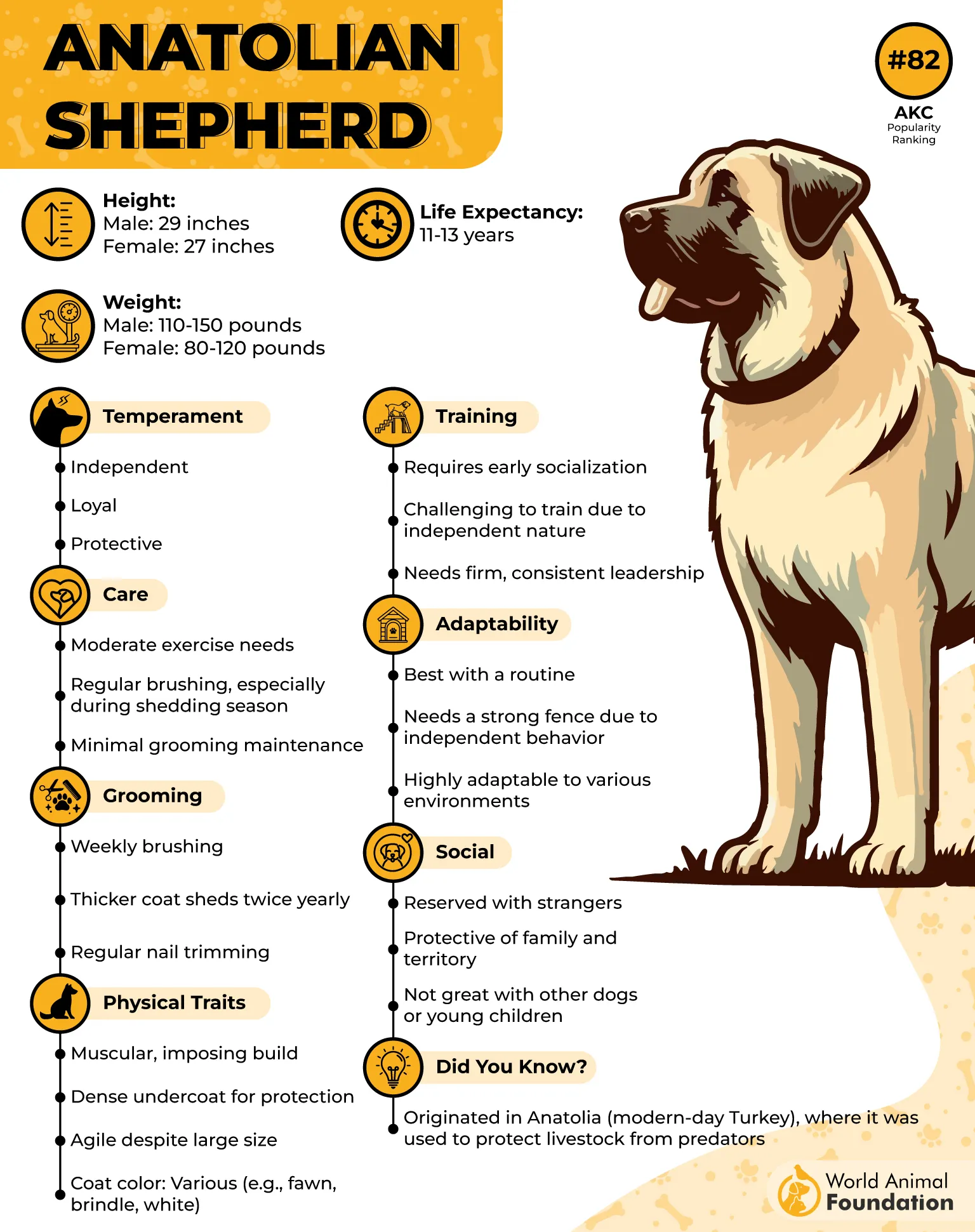
Its gait is steady, conserving energy over long patrols. Yet when the need arises, the Anatolian explodes into motion with startling speed, proving that bulk doesn’t slow brilliance.
This dog’s defense isn’t reckless—it’s strategic. Wide patrols, smart positioning near choke points, and deep chest barks form its natural shield against intruders.
Obedience comes alive through structure. The Anatolian thrives when work is predictable, rules are consistent, and leadership is firm but respectful.
Boundary focus is second nature. Gate drills, perimeter walks, and flock-through exercises become rituals it honors without fail.
When confronted, its approach is measured: size up the threat, issue a warning, hold the line, then drive off with sharp precision. No wasted energy, no hesitation.
For those battling stealth predators like black panthers, the Anatolian Shepherd offers what few others can—endurance, judgment, and quiet authority that never falters.
Owner insights: Recovery Essentials
Check hydration and keep stress low following an attack—basic obedience training beforehand makes handling easier. A sturdy first-aid kit is a must-have supply. Support with light walks to restore confidence while preventing overexertion.
3. Caucasian Shepherd
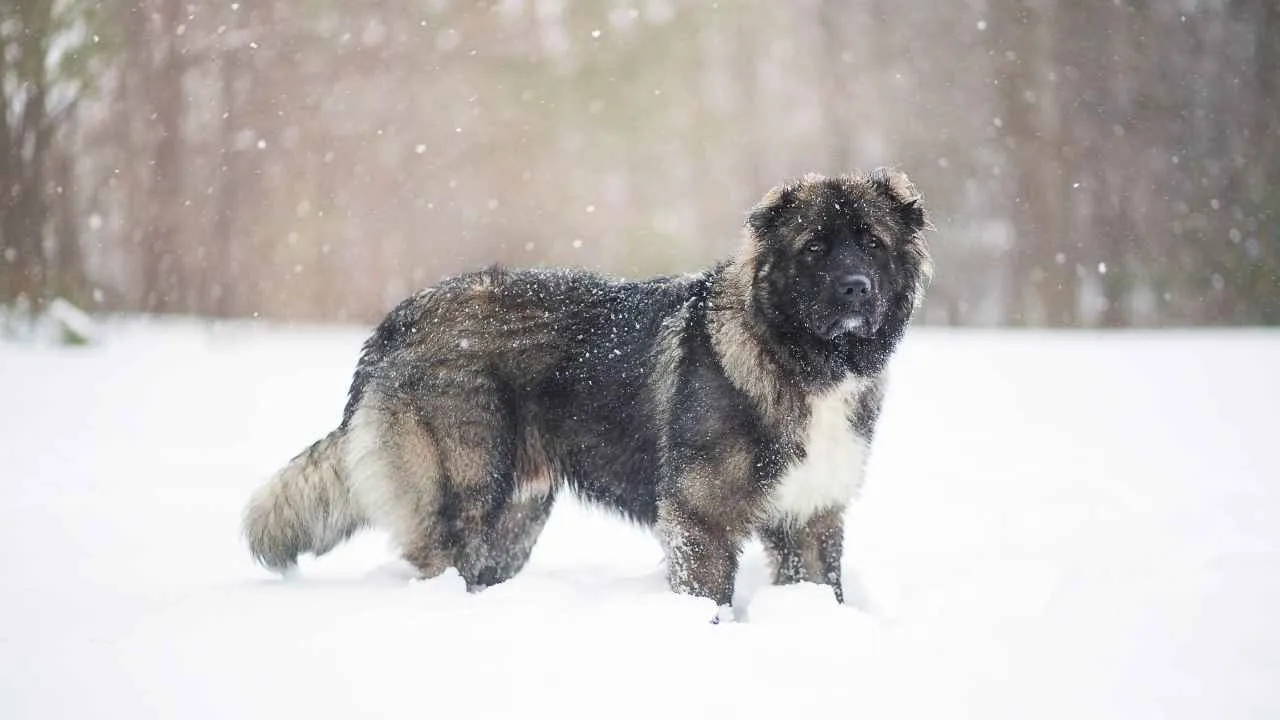
The Caucasian Shepherd, or Ovcharka, is the mountain’s answer to danger—a massive, lion-like guardian whose presence alone sends chills down spines. It’s more than muscle; it’s instinct sharpened by harsh landscapes.
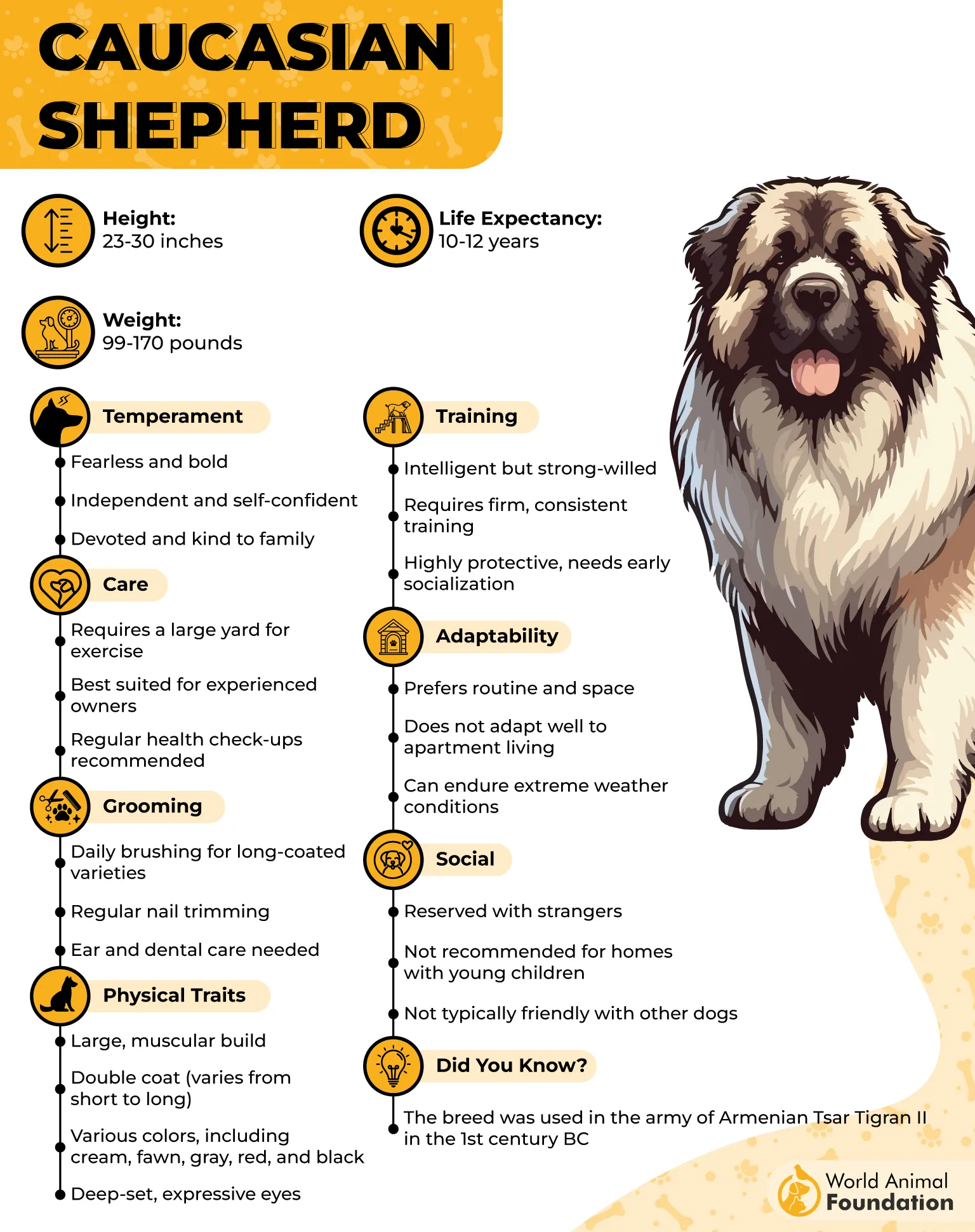
Despite its size, the Caucasian surprises with agility. Short bursts of speed, backed by raw strength, make it formidable in sudden encounters with predators.
Its defense is intimate, almost personal. Unlike wide-ranging guardians, it stays close—patrolling tight perimeters, holding gates, and unleashing a bark that rattles windows.
Structure is key to channeling its dominance. Daily routines, supervised rotations, and consistent leadership shape a dog that respects its role yet never loses its edge, claims PetMD.
Its boundary sense is unshakable. Once stationed at night posts or along marked lanes, the Caucasian becomes a living wall that no predator dares test.
When danger presses near, its behavior is bold: stand tall, claim elevation, roar with defiance, and surge forward until the threat retreats.
For those who demand an uncompromising protector against black panthers, the Caucasian Shepherd is strength and resolve embodied in a guardian’s form.
Owner insights: Safety Tools
These guardians often show a courageous response, but healing requires controlled rest. Keep antiseptic sprays and protective vests as protection supplies. Limiting interaction with other pets during recovery ensures smoother healing.
4. Tibetan Mastiff
The Tibetan Mastiff is often described as a guardian wrapped in mystery—a dog born in Himalayan monasteries where survival meant vigilance. Its massive build and thick coat make it look like a lion watching over its domain.
This breed moves with deliberate precision. It isn’t fast over long distances but can surge explosively when a predator pushes too close.
Its defense pattern is anchored in territory. The Mastiff prefers high vantage points, booming barks, and a dramatic display of confidence to intimidate intruders before contact.
Structure is non-negotiable with this breed. Without clear rules and routines, its independent streak can challenge even experienced handlers.
Focus comes through boundaries. Once it accepts a space as its own, the Tibetan Mastiff guards it with obsessive consistency.
Behaviorally, it escalates quickly under threat: a thunderous bark, a rigid stance, and then an intimidating charge that halts danger.
For those facing stealth predators like black panthers, the Tibetan Mastiff brings unmatched intimidation, endurance, and a guardian’s unshakable spirit.
Owner insights: Owner Readiness
Use soft restraints if the dog is injured to prevent aggressive reactions to handling. Thermal blankets and padded muzzles are valuable post-fight tools. Always keep a safe, designated recovery space inside the house.
5. Central Asian Shepherd
The Central Asian Shepherd, also called the Alabai, is one of the world’s oldest guardians, forged in lands where wolves, bears, and leopards were daily adversaries. Its sheer endurance speaks to centuries of natural selection.
Physically, it is built for balance: heavy bone, muscular frame, and surprising bursts of speed for its size. Its stride is efficient and ground-covering.
Defense is systematic. The dog surveys boundaries in broad arcs, positions itself strategically, and uses a commanding bark to warn off intruders before acting.
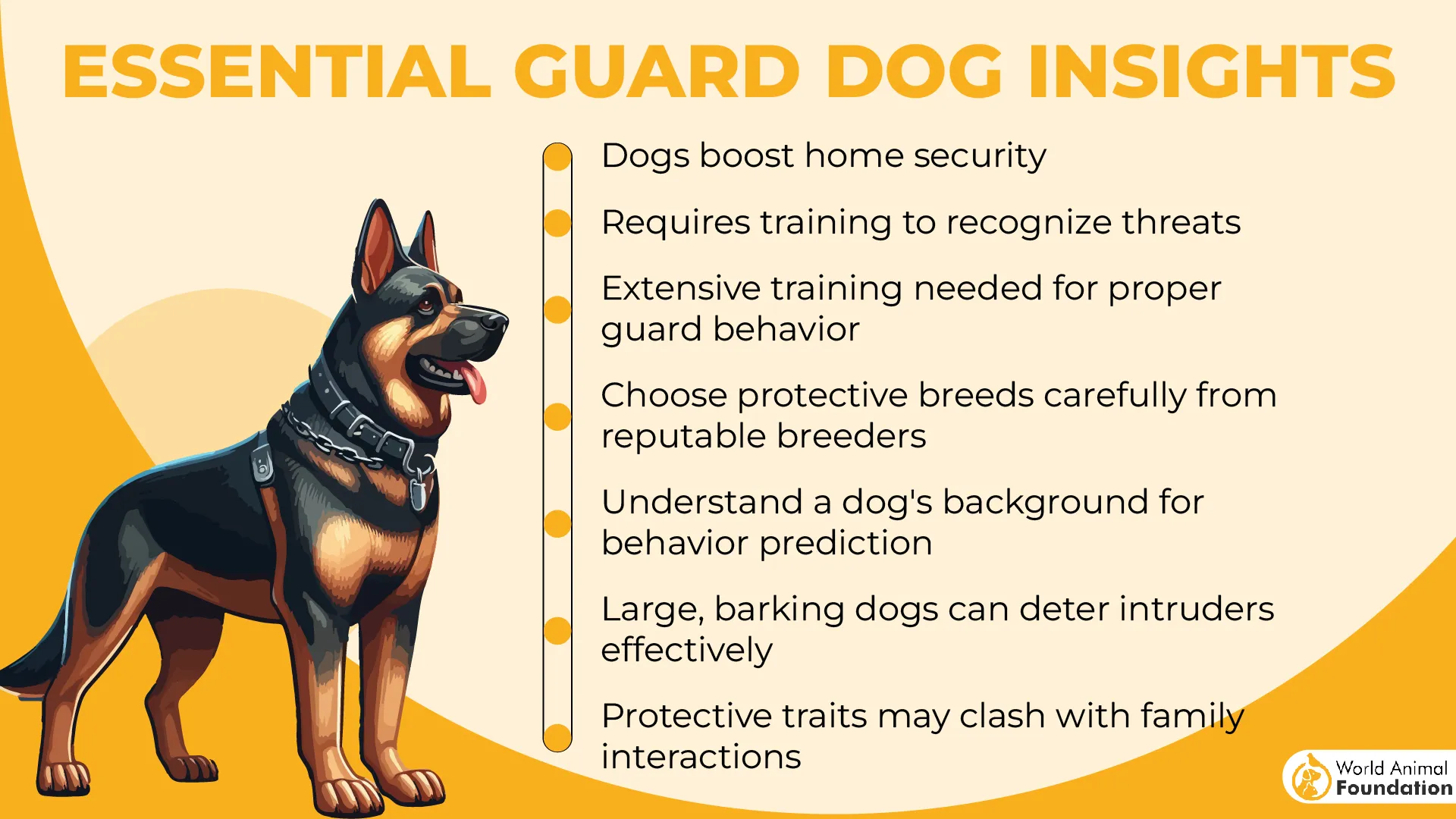
Structure turns instinct into reliability. Consistent training, livestock routines, and boundary reinforcement bring out its cooperative side without dulling independence.
Its boundary focus is legendary. Once trained, the Central Asian Shepherd patrols as if every fence post were engraved in its memory.
When facing threats, its behavior is steady: identify, posture, warn, then drive predators away with overwhelming confidence.
Against black panthers, the Central Asian Shepherd is a relentless protector, combining stamina, instinct, and courage few breeds can match.
Owner insights: Practical Steps
Following injury, focus on wound cleaning and gradual mobility support. Cooling pads or compress wraps are major protective supplies. Be mindful of life expectancy—older dogs need gentler aftercare.
6. Boerboel
The Boerboel, South Africa’s “farm mastiff,” was bred under harsh conditions where lions and leopards tested the strength of every guardian. Its reputation is one of muscle, courage, and fierce loyalty.
Physically, the Boerboel is powerful yet agile, able to shift from calm observation to explosive bursts of strength. Its precision lies in raw power.
Its defense pattern is straightforward but effective—holding ground, keeping close to property, and projecting dominance that predators sense instantly.
Structure ensures its obedience. Boerboels thrive on purposeful tasks, firm boundaries, and steady leadership that channels their protective drive.
Focus is deeply tied to family and territory. Once bonded, it treats home ground as sacred and enforces it without hesitation.
When threats emerge, its behavior escalates: intense eye contact, forward stance, and then a decisive charge that deters most before contact.
For protecting against black panthers, the Boerboel embodies fearlessness, loyalty, and a guardian’s willpower unmatched in intensity.
Owner insights: Care Strategy
This breed may act defensively if a visitor arrives during recovery, so control the environment. Stock protective collars and recovery cones for wound safety. Controlled feeding routines speed healing while avoiding digestive stress.
7. Great Pyrenees
The Great Pyrenees, also called the Pyrenean Mountain Dog, is Europe’s classic livestock protector—calm, watchful, and persistent. Centuries of work in rugged mountains shaped its patient guardianship.
Physically, it is strong but not built for speed; instead, its precision lies in steady endurance, covering large ranges without tiring.
Its defense pattern is subtle yet powerful. Patrols are wide and constant, with warning barks that echo across valleys and deter intruders from approaching.
Structure guides its independence. Predictable routines, paired with early training, channel their calm strength into consistent guardianship.
Focus and boundary control are natural gifts. The Great Pyrenees bonds deeply to its flock and property, maintaining invisible fences through sheer commitment.
Behaviorally, it escalates thoughtfully—first barking, then positioning itself between the flock and predator, and only if pressed, confronting directly.
For protection against stealth predators like black panthers, the Great Pyrenees offers patience, endurance, and unwavering resolve that never sleeps.
Owner insights: Post-Event Management
Though often calm and affectionate, stress can rise after a fight. Protective harnesses and orthopedic bedding are valuable supplies. Routine checks and patient reassurance keep these flock guardians stable and confident.
FAQs
1. Can guard dogs really protect against black panthers?
Yes, certain flock guardian breeds with size, courage, and sharp alertness can deter big cats effectively. Their natural instinct to guard livestock helps them hold territory. Still, results depend on training and socialization guided by a responsible owner.
2. Are certain guard dogs naturally fearless around wild animals?
Some breeds are bred to face predators and show a brave temperament when threatened. With strong protective instincts and specialized training, they can remain calm even near strangers or wild animals. Their ability to stay focused makes them reliable defenders.
3. Is it safe to rely only on dogs for panther protection?
Guard dogs are powerful allies, but relying only on them may lead to trouble if predators push too far. Even an athletic and obedient dog with a thick double coat has limits. Combining dogs with secure fencing and human oversight offers the safest protection.
Conclusion
When it comes to the best guard dogs, the breeds explored in this article prove why they stand tall as protectors of land, livestock, and family members. Their size, power, and natural protective instincts set them apart from other animals, offering security in even the most unfamiliar situations.
Of course, there are other best guard dog breeds like the German Shepherd, Doberman Pinscher, Belgian Malinois, Akita breed, Cane Corso, Rottweiler, Bullmastiff, and even the Rhodesian Ridgeback, each with its own temperament, trainability, and strengths. With proper training, obedience training, and proper socialization, these working dogs become loyal companions as much as they are defenders.
If you’re searching for a great guard dog or want to learn more about how to match breed traits with your lifestyle, explore our full guides. Imagine the protection, love, and courage these excellent guard dogs bring—start your journey to finding the right one today!


